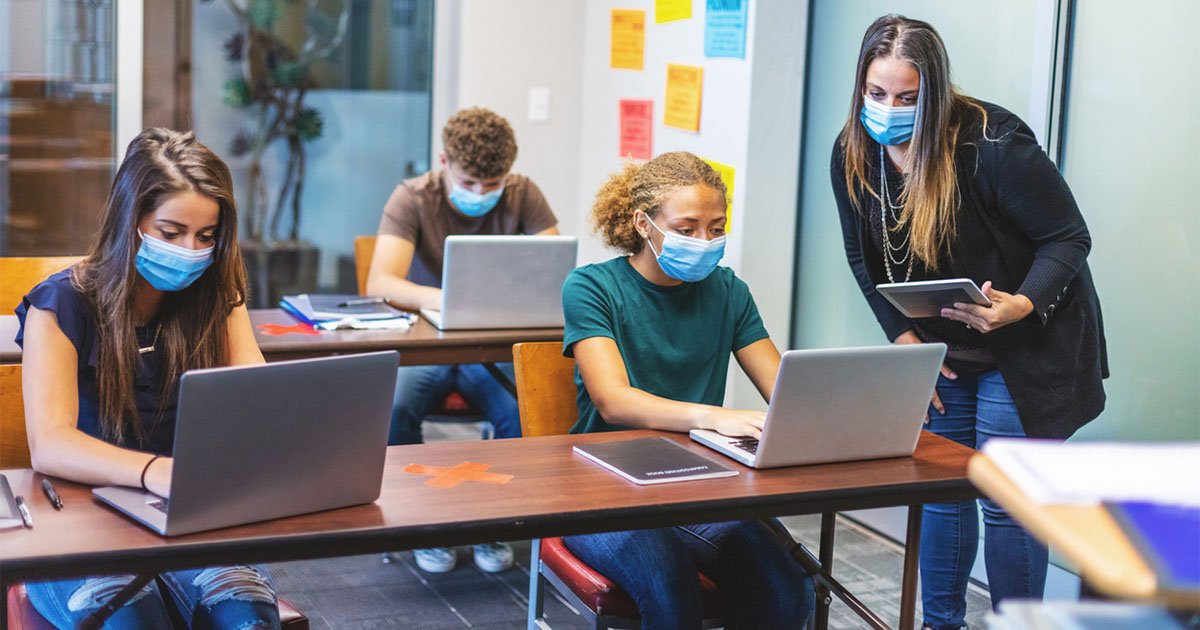Five years after the COVID-19 pandemic was first declared in the United States, policymakers, public health officials, and average citizens continue to debate the official response to it. Though stay-at-home orders, waves of business and school closures, and other measures mitigated the disease’s spread, the tradeoffs—permanent business closures, exacerbated mental health challenges, and lost time for classroom instruction—continue to be felt.
The loss of learning time in America’s classrooms, among other tradeoffs from pandemic-era K-12 policies, are the focus of a new study from the University of Minnesota School of Public Health. The study, whose lead author attended high school in a suburban Minnesota district during the pandemic, simulated the spread of COVID-19 in a school with nearly 2,000 students.
By examining different mitigation strategies—including isolation (in which students who test positive stay home for a period of days), quarantine (in which students exposed to COVID-19 but who do not necessarily test positive stay home for a period of days), weekly testing, and test-to-stay programs (where exposed students remain in class but undergo frequent testing)—the researchers were able to analyze the most effective strategies for keeping students in school without contributing to the disease’s spread.
Using a model that accounted for student interactions throughout the school day, the researchers measured two key outcomes over an 11-week trimester: the percentage of students infected and the number of in-person learning days lost. Published in Royal Society Open, the study found:
- Quarantine was most effective at reducing infections but led to significant increases in learning loss. A ten-day quarantine for exposed students reduced infections by more than sevenfold compared to isolation alone but resulted in a 40% loss of in-person learning days. A five-day quarantine slightly reduced this burden but still caused significant disruptions.
- Test-to-stay programs minimized both infections and learning loss. Test-to-stay strategies reduced infections almost as effectively as quarantine while minimizing learning loss.
- Universal masking and increased vaccine uptake contributed to other strategies. When combined with other steps like test-to-stay and isolation, masking and vaccine uptake reduced infections at no additional cost to learning. Under high mask use and vaccination rates, the differences in learning loss between various mitigation strategies were much smaller.
“As a high-school student during the pandemic, I experienced firsthand the disruptions in learning and the other challenges it posed to students,” says Kenneth Chen, lead author who is currently a sophomore at Harvard University. “By placing critical objectives like learning and safety in conflict with each other, the pandemic presented unprecedented challenges to schools. We believe these findings can help public health officials, policy makers, and education administrators to find common ground and better prepare for future pandemics in a way that protects both public health and students’ learning experiences.”
SPH Associate Professor Eva Enns co-authored the study.

